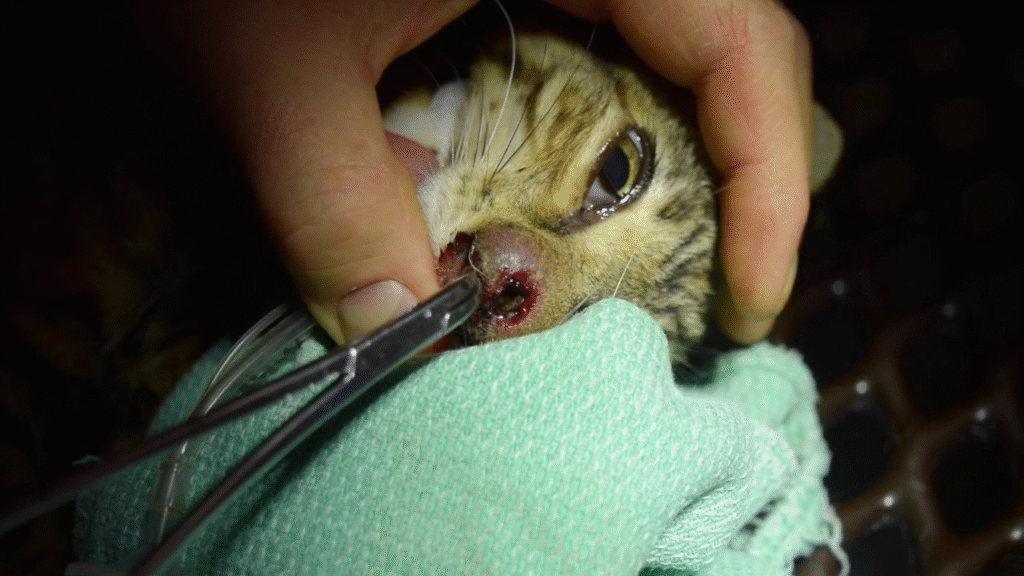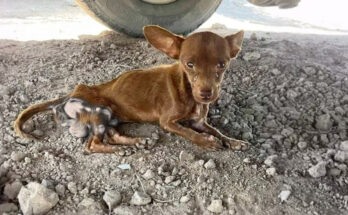In the still, sterile light of the veterinary clinic, a tiny feline patient lay sedated, wrapped gently in a soft green cloth. What seemed like an innocent wound near the kitten’s nose was something far more unsettling—a living Cuterebra larva embedded beneath the skin.
Cuterebra, commonly known as botflies, are parasitic insects that infect small animals, particularly those that roam outdoors. These larvae often enter the body through natural openings or small wounds, then burrow into the skin to develop, creating painful, swollen lumps with a small breathing hole. This kitten, likely a stray or a recent rescue, had unknowingly become a host.
The vet’s gloved hands moved with precision. Forceps in hand, they gently widened the breathing hole. The larva needed to be removed in one piece; if ruptured, it could cause serious infection or trigger a dangerous immune response. The team worked patiently, and with a slow, deliberate tug, the wriggling parasite was extracted from the kitten’s delicate face.
Despite the disturbing nature of the procedure, the removal brought immediate relief. The swelling would go down, and with proper antibiotics and care, the wound would heal cleanly. The kitten’s eyes, though glazed from sedation, no longer carried the same weight of pain.
For many animals, especially those who live outdoors or have limited human contact, Cuterebra infestations go unnoticed until symptoms worsen. That’s why this case is a powerful reminder: strange swellings, lesions, or excessive grooming in pets should never be ignored. Early intervention can mean the difference between recovery and suffering.
Thanks to quick action and professional care, this kitten was given a fresh start. The Cuterebra was gone, the infection halted, and the healing could begin. Soon, with continued love and support, the kitten would forget the pain, trading the memory of a parasitic invader for the comfort of a safe, warm home.



